Marianna La Rocca
Efficient and Visualizable Convolutional Neural Networks for COVID-19 Classification Using Chest CT
Dec 22, 2020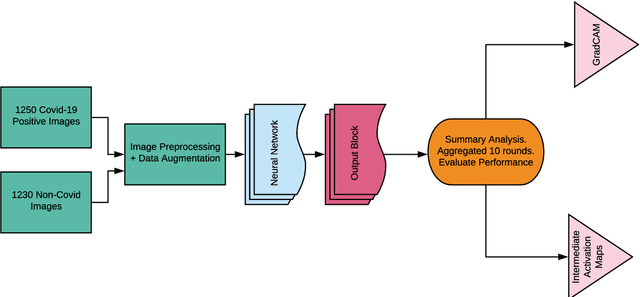

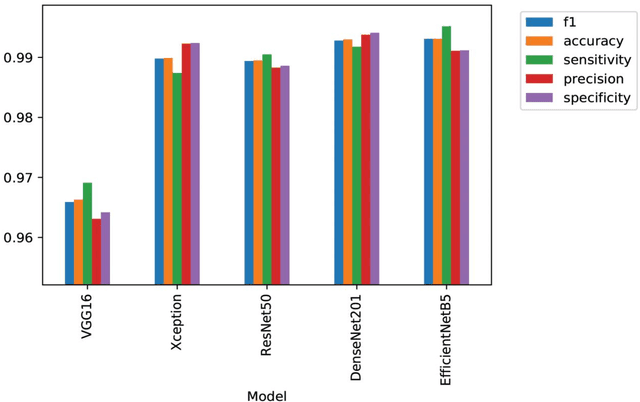
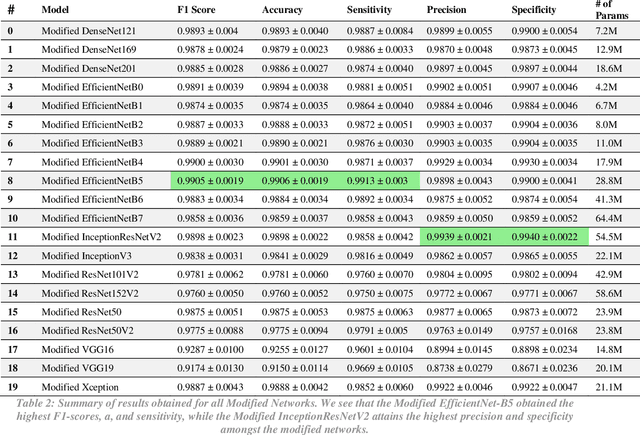
Abstract:The novel 2019 coronavirus disease (COVID-19) has infected over 65 million people worldwide as of December 4, 2020, pushing the world to the brink of social and economic collapse. With cases rising rapidly, deep learning has emerged as a promising diagnosis technique. However, identifying the most accurate models to characterize COVID-19 patients is challenging because comparing results obtained with different types of data and acquisition processes is non-trivial. In this paper, we evaluated and compared 40 different convolutional neural network architectures for COVID-19 diagnosis, serving as the first to consider the EfficientNet family for COVID-19 diagnosis. EfficientNet-B5 is identified as the best model with an accuracy of 0.9931+/-0.0021, F1 score of 0.9931+/-0.0020, sensitivity of 0.9952+/-0.0020, and specificity of 0.9912+/-0.0048. Intermediate activation maps and Gradient-weighted Class Activation Mappings offer human-interpretable evidence of the model's perception of ground-class opacities and consolidations, hinting towards a promising use-case of artificial intelligence-assisted radiology tools.
Prediction of Epilepsy Development in Traumatic Brain Injury Patients from Diffusion Weighted MRI
May 01, 2020

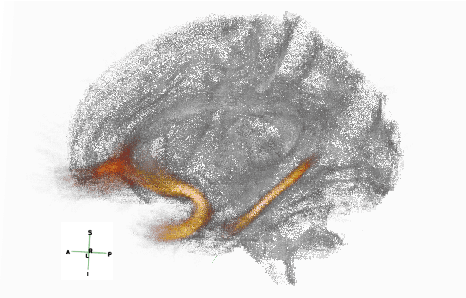
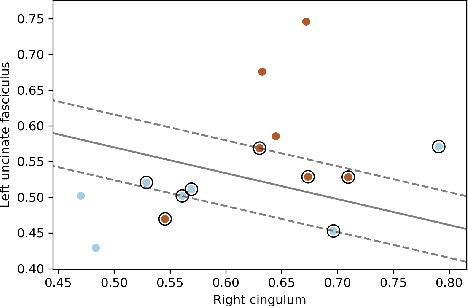
Abstract:Post-traumatic epilepsy (PTE) is a life-long complication of traumatic brain injury (TBI) and is a major public health problem that has an estimated incidence that ranges from 2%-50%, depending on the severity of the TBI. Currently, the pathomechanism that in-duces epileptogenesis in TBI patients is unclear, and one of the most challenging goals in the epilepsy community is to predict which TBI patients will develop epilepsy. In this work, we used diffusion-weighted imaging (DWI) of 14 TBI patients recruited in the Epilepsy Bioinformatics Study for Antiepileptogenic Therapy (EpiBioS4Rx)to measure and analyze fractional anisotropy (FA), obtained from tract-based spatial statistic (TBSS) analysis. Then we used these measurements to train two support vector machine (SVM) models to predict which TBI patients have developed epilepsy. Our approach, tested on these 14 patients with a leave-two-out cross-validation, allowed us to obtain an accuracy of 0.857 $\pm$ 0.18 (with a 95% level of confidence), demonstrating it to be potentially promising for the early characterization of PTE.
 Add to Chrome
Add to Chrome Add to Firefox
Add to Firefox Add to Edge
Add to Edge